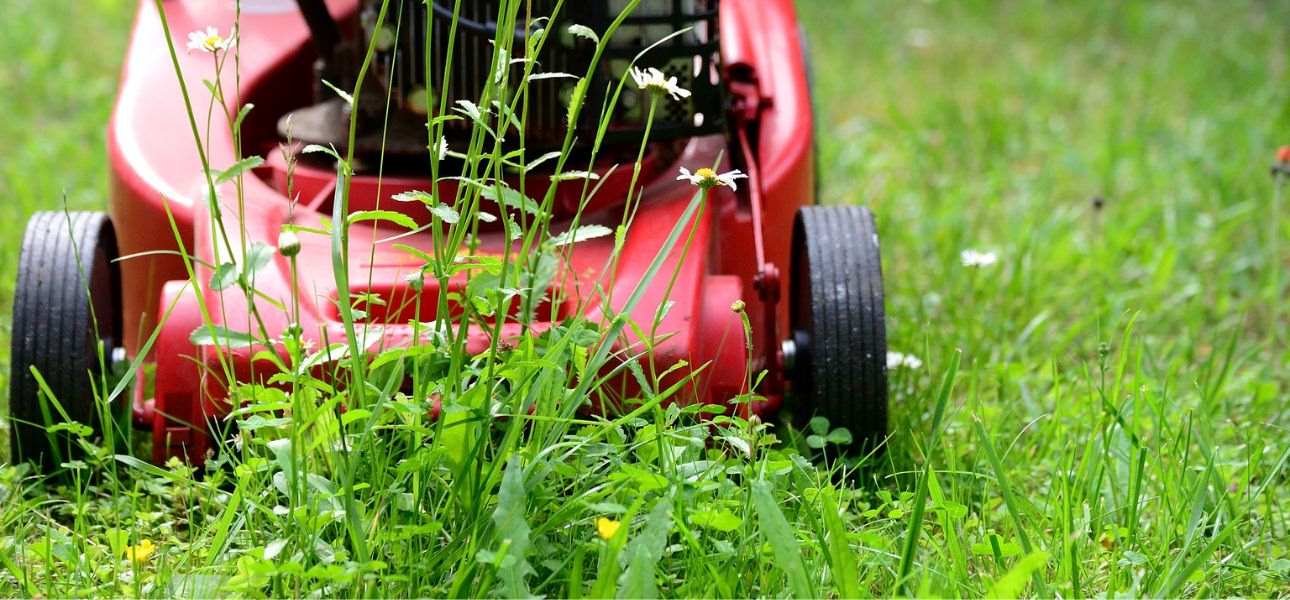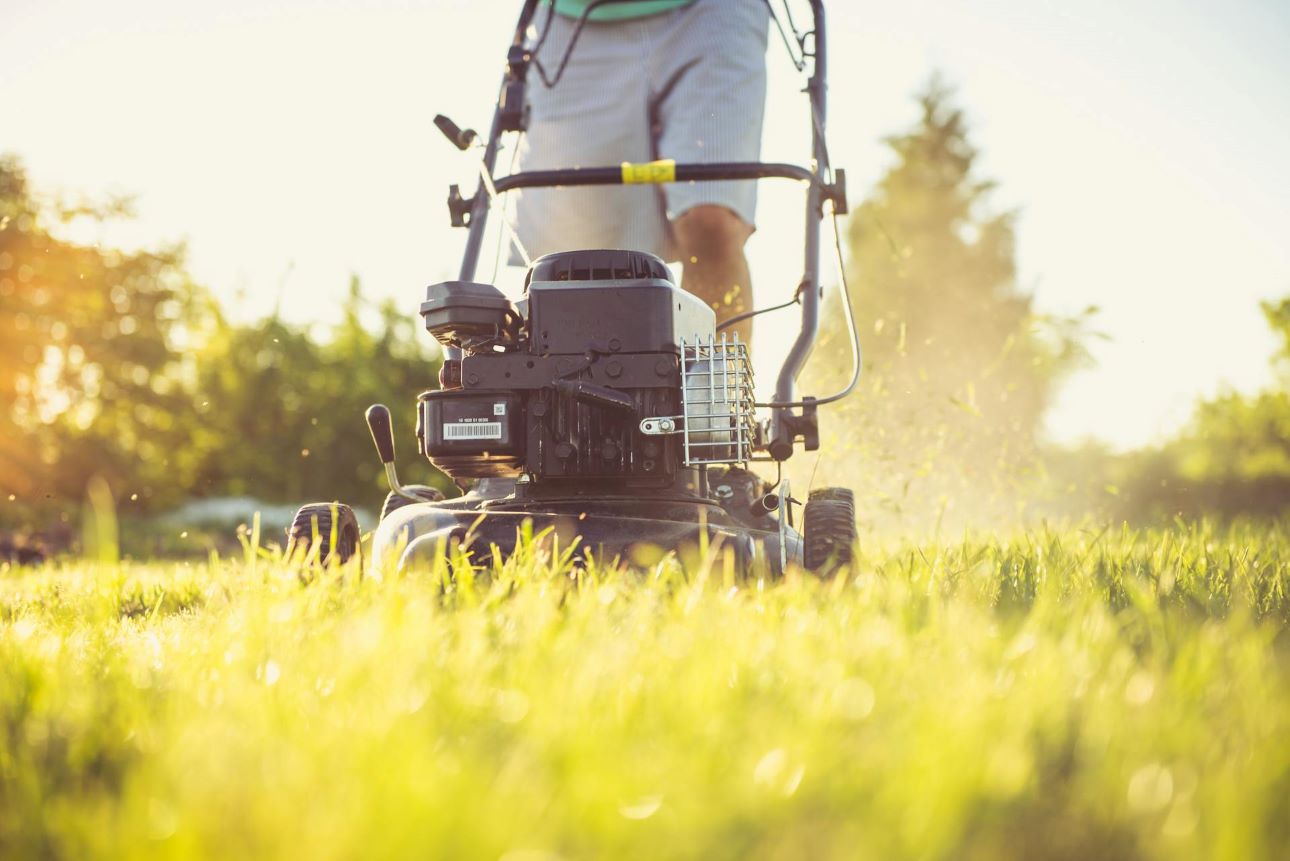When to Start Mowing in Spring and When Not To

As spring arrives, you probably have the urge to get out and start mowing the lawn—and that is quite understandable. Many lawns have brown, dead, matter grass from winter dormancy, and you're eager to rake it off.
While you may understand how often you should mow your lawn, knowing when to make your first cut during the growing season is equally crucial. Mowing too early, before your grass has started to show signs of new growth, risks scalping and exposing the soil to harsh weather. Meanwhile, mowing too late can result in an overgrown lawn.
When to First Cut Your Grass in Spring
Here's the truth: There's no set date for giving your grass the first cut of the year, but there are some key signs to look out for—the most obvious being when the grass is showing signs of spring growth.
Mow your grass when the weather is consistently warm.
Timing your mowing during warmer periods ensures that your grass has emerged from winter dormancy. Mowing when the lawn is dormant can stress and potentially damage the grass. We recommend waiting for warmer, more favorable conditions before your first cutting.
Mow when the grass is dry.
Spring often brings occasional rain showers, and it's crucial to avoid mowing your lawn when the grass is wet. Wet grass blades tend to clump together, resulting in an uneven cut and unsightly appearance. Mowing wet grass can also create an environment conducive to fungal growth. Overall, it's best to wait until the grass is dry before mowing.
Mow when the grass reaches an ideal mowing height.
Waiting for the grass to reach the appropriate height ensures you are not cutting off too much of it, which can stress and leave it susceptible to pests, diseases, and other issues. To maintain a healthy lawn, follow the one-third rule when mowing: cut no more than one-third of the grass blade length each time. For most warm-season grass types like Bermuda, Zoysia, St. Augustine, and Centipede grass varieties, the ideal cutting height is between 2 and 2.5 inches. It means you should wait until the grass reaches about 3 to 3.5 inches of pre-cutting height before trimming it back to the optimal height.

Spring Lawn Care Tips: What You Can Do While Waiting to Mow Your Lawn
While mowing is a key task in spring lawn care, it's simply a part of a comprehensive routine to ensure your lawn thrives year-round. Beyond mowing, your spring maintenance checklist should include aerating, dethatching, fertilizing, and tuning up your gardening equipment. These steps are also essential in preparing your lawn for its first spring cut. Additionally, the season provides a great opportunity to address any damage or sparse areas with grass plugs, which can help create a lush, healthy lawn for the warmer months ahead.
Clean up your lawn: Clear your lawn of leaves, branches, and other debris—you'll not want to mow over anything that can damage your mower. Removing the clutter can give you a clearer view of the condition of your lawn, helping you identify sparse areas or weeds that need attention.
Sharpen your mower blades: After being stored in the shed for a while, your lawn mower may have developed rust, chips, or dulled blades. Remember, dull blades can tear your grass instead of cutting it cleanly. So, inspect your mower thoroughly and make any necessary repairs or maintenance. Clean it to remove any buildup of clippings. The better you maintain your mower, the longer it will last.
Aerate your lawn: Aerating involves creating holes into the soil, often using a grass plug tool to remove soil cores from the ground to help relieve soil compaction due to natural settling, foot traffic, and heavy machinery. This process allows air, water, and nutrients to penetrate the soil more easily, leading to deeper root growth. Read here for a complete guide to aerating a lawn.
Dethatching: Over time, dead grass, roots, and debris accumulate on the soil surface, forming a layer called thatch. While a thin layer can benefit the soil by retaining moisture, too much thatch can prevent air, water, and nutrients from reaching the roots, leading to a weaker, less healthy lawn. Dethatching is best done in spring when the grass is actively growing and can recover quickly. Signs that your lawn may need dethatching include a spongy feel underfoot, sparse or slow growth, browning or yellowing grass, and a thatch layer of over half an inch thick.
Repair with Grass Plugs: As the weather warms and grass enters its active growth period, spring becomes a great time for planting grass plugs. This timing allows the plugs to establish healthy root systems during the entire growing season, effectively filling in bare spots and restoring damaged areas. The result is a healthier, more resilient lawn that can better withstand environmental stress. For best results, we recommend supplementing your new grass plugs with NutriPod® lawn fertilizer.

When to Mow Your New Lawn for the First Time
After planting grass plugs, it's crucial to allow the new grass to be established before mowing. Again, you should wait until the grass reaches a mowing height of about 3 to 3.5 inches—a sign that the plugs have successfully adapted to their new environment—before mowing for the first time. During the establishment stage, water your grass plugs thoroughly and regularly for up to two weeks to keep the soil consistently moist.
Your grass type will also influence when you can mow your lawn. For example, Zoysia grass plugs establish more slowly than some grass varieties but form a dense green carpet more resistant to weed growth. Other options are Bermuda grass plugs, known for their rapid growth rate and excellent drought resistance.

Final Tips
Overall, the timing of your first spring mow depends on factors like your location, climate, and lawn condition. In Florida's warm and humid climate, warm-season grasses may not go fully dormant in winter, so many homeowners often stick to their regular mowing schedule—cutting the grass as often as once a week to maintain a neat appearance.
As a general guideline, aim to mow when the grass reaches 3 to 3.5 inches tall to encourage deeper roots and denser grass growth. Consistently monitor your lawn and adjust your mowing frequency accordingly to ensure your grass stays healthy and vibrant throughout the season.
For a wide range of warm-season grass plugs, visit the SodPods® website today!


